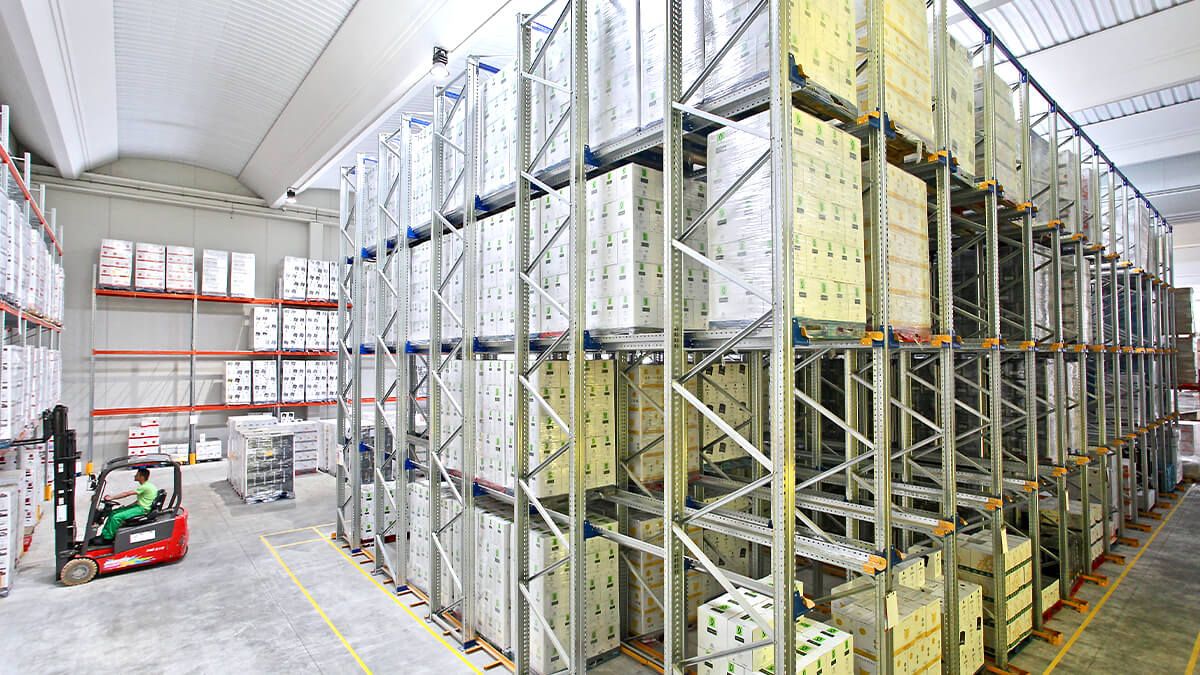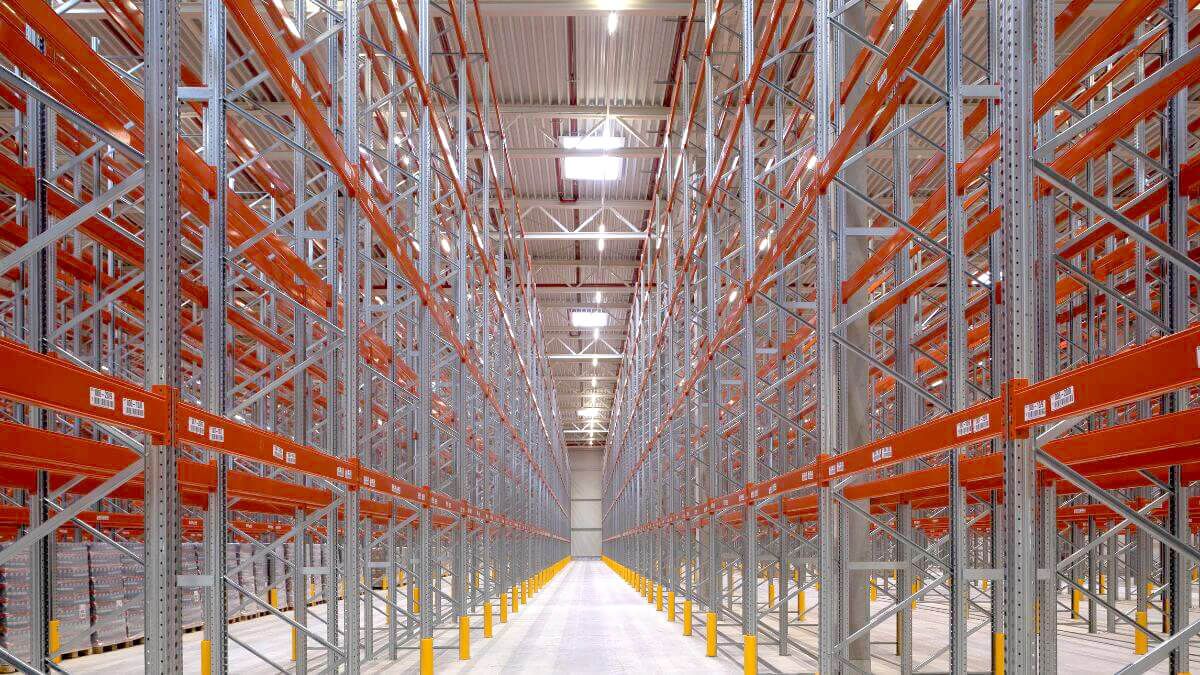Among the different types of compact storage systems to optimise the available space in a warehouse are Drive In and Drive Through racking.
Both systems share many common features and elements but their operation and applications differ greatly from one another. We will look at their common points and, particularly, their differences.
Advantages of compact systems such as Drive In and Drive Through
Both Drive In and Drive Through racking systems come under the category of compact storage systems, i.e., solutions which due to their characteristics manage to compact the space compared to conventional storage solutions.
The following are also considered compact systems: Mobile Pallet Racking, Live Pallet Racking (FIFO) and Push-Back Racking (LIFO), the AR Pallet Shuttle system and Very Narrow Aisle pallet racking (VNA).
All these compact racking systems share the following advantages:
Optimisation of the available space:
The main advantage of compact systems is they exploit the available surface area in the warehouse to the full. Depending on the storage system chosen, this optimisation will be higher or lower.
Control of product references:
Compact systems are ideal for storing several unit loads of the same product reference.
Order in warehouse management:
Unlike adjustable pallet racking systems that allow more arbitrary warehouse management, with compact racking the precise order of each reference is an obligation.
Ideal system for controlled temperature storage:
In cold or freezing storage projects, compact storage systems are installed almost without exception, due to the optimisation of the available space and reduction in the total volume to be cooled that it allows. This enables significant savings in maintenance costs.

Common features between Drive In and Drive Through racking
Before exploring the differences in the operation of the Drive In and Drive Through systems, it should be highlighted that both have the same base structure, and both are also high-density storage systems designed to achieve maximum optimisation of the floor space and height of the warehouse.
In the Drive In and Drive Through structure the work aisles of the forklift are minimised and are in fact generated inside the racking itself, where the forklifts enter for loading and unloading.
The pallets are introduced in the racking at a higher level than the level where they are actually going to be deposited, and are placed on the so-called support rails on each side of the level.
Compact Drive In and Drive Through racking facilitates efficient inventory control in the warehouse, since each lane of the racking structure is dedicated exclusively to the same product reference.
Both are suitable systems when warehouse needs prioritise optimisation of the space over direct access to unit loads.
Main differences between the Drive In and Drive Through systems: FIFO or LIFO management
The main differences between Drive In and Drive Through Racking concern the warehouse management method for which they have been designed.
While Drive In racking works according to the LIFO (Last in, First out) method, the Drive Through system is installed to work with the FIFO (First in, First out) method. As a result, the Drive Through system will enable a perfect stock rotation, while the Drive In system will have low rotation of goods.

Drive In racking is the most common compact system due to its simplicity. Its structure has only one access aisle for forklifts which is used for loading and unloading the pallets. Operating with the LIFO system, the last pallet deposited on the racking will be the first one to be unloaded from that aisle, so product rotation will be low as already mentioned.
By contrast, in Drive Through racking, access to the work aisle is via either of the 2 ends, with one being the access for loading and the other for unloading. This means the management method is FIFO, where the first pallet deposited on the racking will be the first one to be unloaded, therefore giving the system perfect stock rotation.

Another of the differences between both systems is the space needed for their installation. The Drive In system can be installed on a smaller available surface area than that required for the Drive Through system, because as loading and unloading occurs at the same entry point, it will only be necessary to leave one of the ends accessible, so the structure can be installed up against the wall of the warehouse.
Applications of Drive In Pallet Racking
The characteristics of the Drive In storage system make it the ideal solution for companies whose warehouses have low product rotation, generally non-perishable products or with no early expiry date.
It is therefore a very good solution for optimising space and storing products whose value is not affected by longer or shorter storage times.
Some examples of products that fulfil these characteristics and for which Drive In racking is a perfect solution are homogeneous and non-perishable goods, such as construction material (cement, brick, etc.), DIY goods, metal products, etc.

Applications of Drive Through Pallet Racking
Drive Through racking, in contrast, due to its operation using the FIFO method, is an ideal system for installing in warehouses that require a high product rotation. Unlike the Drive In system, this perfect stock rotation makes it a very interesting alternative for storing perishable products or products whose value depreciates over time.
Consequently, the Drive Through system is normally used for the storage of food, drink or chemicals to ensure that the first unit load to be stored will be the first one to be shipped from the warehouse.

Moreover, the common features of both systems mean that both the Drive In and Drive Through systems are regularly used in warehouses with reduced space or where the cost of the floor space is high, and in companies that require cold or freezing storage for their products.




